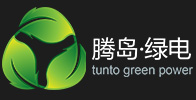china\'s bailouts darken horizon for solar panel sector
by:Tunto
2020-03-12
Hong Kong, March 27 (Reuters)-
China\'s rush to bail out Suntech Power Holdings and other solar panel makers is condemning the worsening oversupply in its solar industry as demand at home and abroad remains stubbornly stagnant.
With prices crashing at once highs
The Chinese government is concerned that letting uneconomical manufacturers fail will destroy thousands of jobs and increase the likelihood of unrest.
On the other hand, giving these companies a lifeline is a consumption of public finance, just increasing the excesssupply.
Global demand 30-35 gigawatts (GW)
The supply of solar energy this year is 50-
According to some industry estimates, 60 GW, most of them in China.
While China\'s local government continues to rescue solar panel makers to maintain social stability, the government, which is in tight financial terms, is withdrawing incentives that could trigger an increase in demand.
\"China\'s solar industry is becoming like a prison,\" said Samuel Yang, Shanghai\'s chief executive.
Listed solar panel maker Harry solar.
\"None of us did a good job.
We are all in jail, \"said Yang, whose company is developing a solar farm in Bulgaria and seeking financing to launch more overseas projects as a way out of excess.
Yet even China\'s state-owned banks are wary of lending to banks.
The price of solar panels has dropped by about 66% in the past two years.
Both at home and abroad, incentives offered by governments looking to switch to clean energy are drying up.
The eurozone debt crisis has led countries such as Germany to slash subsidies for renewable energy.
The United States has fought back.
Dumping tariffs on Chinese solar panels and the EU, China\'s largest solar panel market, may soon follow suit.
Some Chinese panel makers have been shifting their focus to the domestic market, hoping that Beijing\'s efforts to stimulate domestic solar consumption will save the country.
However, due to the huge scale of China\'s solar panel manufacturing capacity and the lack of funds for solar subsidies, these measures are unlikely to have any significant impact, and China\'s geographical energy imbalance, and the lack of infrastructure needed to take advantage of intermittent renewable energy.
Beijing plans to have 35 gigawatts of solar energy by 2015, the two power companies
Solar farms and distributed power generation facilities such as solar panels installed on the roofs of villas and plants.
2020, it hopes to take 100 GW on its behalf, according to the great utility State Grid of China.
In theory, this should run out of spare capacity for solar panel manufacturers, but it does not seem feasible in practice.
\"Unless capacity shrinks, there will be no substantial recovery in China\'s solar panel industry at least five years from now,\" said Jason Cai, chief analyst at Shanghai --
Solarzoom, a consulting firm.
China\'s wind and solar producers have been suffering from delays in subsidy payments, hurting investment interests.
Industry insiders say there are rumors that China\'s Ministry of Finance has cut subsidies for solar power plants in western China, which are more profitable due to the sun.
The State Grid has been blocking the purchase of electricity from wind and solar power plants, in part because of concerns that intermittent power supplies could disrupt its network.
It also strives to power generation centers from renewable sources in the northwest, the population centers in North and Northeast China in the southern and eastern regions due to the lack of a comprehensive high
Voltage and smart grid.
Beijing recently launched an ambitious plan to promote distributed power generation.
The State Grid said last month that it would connect all distributed renewable energy sources to the grid free of charge.
But it buys electricity for cheaper coal.
Power generation and generators must apply for subsidies to Beijing by themselves --
A heavy process
Distributed solar generators will need 20-if there is no subsidy-25 years -
Over the life of solar panels
Take back the investment. “The problem (
About solar energy)
Isn\'t technology a cost?
Competition is fierce enough, \"said He Guoqing, deputy head of solar research at the State Grid.
\"It can\'t survive without subsidies, but no subsidies will ever exist.
Nevertheless, the rescue continues. Suntech Power -
Largest solar panel manufacturer in China
Last week it said Wuxi Suntech, its largest subsidiary, had gone bankrupt but would face government bankruptcy.
Lead restructuring.
The Wuxi government\'s plan is to restructure its debt while continuing production, keep workers on their jobs and avoid potential unrest.
Located in Wuxi, Suntech\'s main factory has about 10,000 employees.
In a similar situation, the local government has helped solar companies like LDK Solar Energy Co. , Ltd. and Shanghai Chaori Solar Technology Co. , Ltd.
Some Beijing officials believe it makes sense to let some manufacturers go bankrupt, given the oversupply of panels.
But local governments are concerned that allowing these companies to fail could cause social unrest.
The jobs offered by these companies, as well as the billions of dollars of debt they accumulated during the boom period, are mainly debt owed to local creditors, but also debt worth $0. 541 billion.
Bonds of Suntech.
\"In China, the government\'s intuitive response is to see how this is happening (
Factory closed)
Can be avoided, so they try to resist or postpone this lying --
Louis Kuijs, chief China economist at Offs, said.
\"It will be a big problem for the future, and it is the responsibility of the government to send a signal of what process Beijing is happy with in this case of bankruptcy. ” (
Supplementary Report by Umesh Desai;
Edited by Raju Gopalakrishnan)
China\'s rush to bail out Suntech Power Holdings and other solar panel makers is condemning the worsening oversupply in its solar industry as demand at home and abroad remains stubbornly stagnant.
With prices crashing at once highs
The Chinese government is concerned that letting uneconomical manufacturers fail will destroy thousands of jobs and increase the likelihood of unrest.
On the other hand, giving these companies a lifeline is a consumption of public finance, just increasing the excesssupply.
Global demand 30-35 gigawatts (GW)
The supply of solar energy this year is 50-
According to some industry estimates, 60 GW, most of them in China.
While China\'s local government continues to rescue solar panel makers to maintain social stability, the government, which is in tight financial terms, is withdrawing incentives that could trigger an increase in demand.
\"China\'s solar industry is becoming like a prison,\" said Samuel Yang, Shanghai\'s chief executive.
Listed solar panel maker Harry solar.
\"None of us did a good job.
We are all in jail, \"said Yang, whose company is developing a solar farm in Bulgaria and seeking financing to launch more overseas projects as a way out of excess.
Yet even China\'s state-owned banks are wary of lending to banks.
The price of solar panels has dropped by about 66% in the past two years.
Both at home and abroad, incentives offered by governments looking to switch to clean energy are drying up.
The eurozone debt crisis has led countries such as Germany to slash subsidies for renewable energy.
The United States has fought back.
Dumping tariffs on Chinese solar panels and the EU, China\'s largest solar panel market, may soon follow suit.
Some Chinese panel makers have been shifting their focus to the domestic market, hoping that Beijing\'s efforts to stimulate domestic solar consumption will save the country.
However, due to the huge scale of China\'s solar panel manufacturing capacity and the lack of funds for solar subsidies, these measures are unlikely to have any significant impact, and China\'s geographical energy imbalance, and the lack of infrastructure needed to take advantage of intermittent renewable energy.
Beijing plans to have 35 gigawatts of solar energy by 2015, the two power companies
Solar farms and distributed power generation facilities such as solar panels installed on the roofs of villas and plants.
2020, it hopes to take 100 GW on its behalf, according to the great utility State Grid of China.
In theory, this should run out of spare capacity for solar panel manufacturers, but it does not seem feasible in practice.
\"Unless capacity shrinks, there will be no substantial recovery in China\'s solar panel industry at least five years from now,\" said Jason Cai, chief analyst at Shanghai --
Solarzoom, a consulting firm.
China\'s wind and solar producers have been suffering from delays in subsidy payments, hurting investment interests.
Industry insiders say there are rumors that China\'s Ministry of Finance has cut subsidies for solar power plants in western China, which are more profitable due to the sun.
The State Grid has been blocking the purchase of electricity from wind and solar power plants, in part because of concerns that intermittent power supplies could disrupt its network.
It also strives to power generation centers from renewable sources in the northwest, the population centers in North and Northeast China in the southern and eastern regions due to the lack of a comprehensive high
Voltage and smart grid.
Beijing recently launched an ambitious plan to promote distributed power generation.
The State Grid said last month that it would connect all distributed renewable energy sources to the grid free of charge.
But it buys electricity for cheaper coal.
Power generation and generators must apply for subsidies to Beijing by themselves --
A heavy process
Distributed solar generators will need 20-if there is no subsidy-25 years -
Over the life of solar panels
Take back the investment. “The problem (
About solar energy)
Isn\'t technology a cost?
Competition is fierce enough, \"said He Guoqing, deputy head of solar research at the State Grid.
\"It can\'t survive without subsidies, but no subsidies will ever exist.
Nevertheless, the rescue continues. Suntech Power -
Largest solar panel manufacturer in China
Last week it said Wuxi Suntech, its largest subsidiary, had gone bankrupt but would face government bankruptcy.
Lead restructuring.
The Wuxi government\'s plan is to restructure its debt while continuing production, keep workers on their jobs and avoid potential unrest.
Located in Wuxi, Suntech\'s main factory has about 10,000 employees.
In a similar situation, the local government has helped solar companies like LDK Solar Energy Co. , Ltd. and Shanghai Chaori Solar Technology Co. , Ltd.
Some Beijing officials believe it makes sense to let some manufacturers go bankrupt, given the oversupply of panels.
But local governments are concerned that allowing these companies to fail could cause social unrest.
The jobs offered by these companies, as well as the billions of dollars of debt they accumulated during the boom period, are mainly debt owed to local creditors, but also debt worth $0. 541 billion.
Bonds of Suntech.
\"In China, the government\'s intuitive response is to see how this is happening (
Factory closed)
Can be avoided, so they try to resist or postpone this lying --
Louis Kuijs, chief China economist at Offs, said.
\"It will be a big problem for the future, and it is the responsibility of the government to send a signal of what process Beijing is happy with in this case of bankruptcy. ” (
Supplementary Report by Umesh Desai;
Edited by Raju Gopalakrishnan)
Custom message
 miko@tunto.cn
miko@tunto.cn






